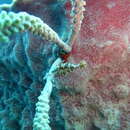Diagnostic Description
provided by Fishbase
Profile from snout to origin of first dorsal spine nearly straight (Ref. 26938). No enlarged spines on caudal peduncle, but males with an elongate patch of bristle-like spinules (Ref. 13442).
- Recorder
- Grace Tolentino Pablico
Morphology
provided by Fishbase
Dorsal spines (total): 2; Dorsal soft rays (total): 27 - 29; Analspines: 0; Analsoft rays: 27 - 29
- Recorder
- Grace Tolentino Pablico
Trophic Strategy
provided by Fishbase
More common in offshore areas, including floating seaweed and flotsam, and around islands. Juveniles are associated with floating seaweeds (Ref. 3790). Probably feeds on plants and small invertebrates (Ref. 3790).
Biology
provided by Fishbase
More common in offshore areas, including floating seaweed and flotsam, and around islands. Juveniles are associated with floating seaweeds (Ref. 3790). Probably feeds on plants and small invertebrates (Ref. 3790). Generally considered as trash fish, rarely consumed (Ref. 3790).
Importance
provided by Fishbase
fisheries: subsistence fisheries
Distribution
provided by World Register of Marine Species
Western Atlantic: from Bermuda, North Carolina (USA), and northern Gulf of Mexico to northern South America
North-West Atlantic Ocean species (NWARMS)
- license
- cc-by-4.0
- copyright
- WoRMS Editorial Board

